
|
The Ultimate Owner's Manual

|
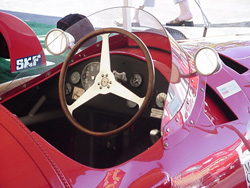 Hidden under the seat of every new Maserati 250F...
Hidden under the seat of every new Maserati 250F...
|
January 8th, 2003
Today, for your edification and consideration, we offer you the following, a slightly irreverent look at a very real document.
The 250F Maserati was the most successful car of the 2.5 Liter Formula. It was introduced for the 1954 season, won the world championship with Fangio driving in 1957, and continued to be raced in major events until the dawn of the rear engined revolution and new 1.5 Liter Formula in 1960. The 250F was also one of the most beautiful of the classic front engined race cars, and was an exceptionally well balanced car. While the car was campaigned by the Maserati factory, it was also sold to privateers, such as Stirling Moss, Harold Gould and Carroll Shelby, who filled the grids in the mid 1950s with these very fast and very reliable Formula One machines. But itís greatest moment was shared with Juan Manuel Fangio, who defeated the might of the Ferrari team, driving the race of his life at the 1957 Nurburgring.

|
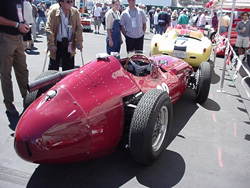 The 250F Manual covered the 1957 models, like this one seen at Monterey.
The 250F Manual covered the 1957 models, like this one seen at Monterey.
|
The fact that the 250F was sold to individuals created an interesting by-product. Seen here are some pages of what might be the ultimate Ownerís Manual, tucked securely under the seat of each and every new 250F sold. Itís mostly in Italian, of course, but specs and dimensions post no language barrier. So, what kind of a manual would one expect to receive, along with the keys to a new Grand Prix Formula One machine?
For the money invested (which must have been equal to at least the price of two houses), one would think that it might be a four color book, complete with photos, fold outs, diagrams, maintenance procedures, and a great deal of detailed information, commensurate with the value of the automobile purchased. Maybe even printed on gold leaf paper.

|
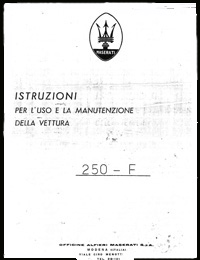 The exciting cover of the 250F Manual.
The exciting cover of the 250F Manual.
|
Instead, Maseratiís 250F Ownerís Manual, published in 1958 (or at least the version we have), is about on a par with the quality of the factory chassis welding. Which is to say, crude. The nuns in the abbey down the street could have done a better job with a used mimeograph.
Moss and his mechanic Alf Francis had their work cut out for them. No doubt Alf threw the manual away before Moss ever saw it.
Thatís not to say the manual isnít interesting. Or valuable on several levels.
On the front page, there was an address and a telephone number to call if necessary (tel 30-101; a universal truth is the earlier the phone number the fewer the digits). What was not said, is "Please do not call in the month of August, or between the hours of 11 am and 3 pm, on weekends, and if you do get a line, we speak only Italian." Plus a Papal Bull might have been needed. They carried a bit more weight in those days.
The first page explains the general characteristics of the 250F and a chart provides the number of cylinders, the bore, stroke, overall displacement (2493cc), compression ration and horsepower, which was listed as 270 at 7500 rpm. It goes on to describe the head, block, valves, cams, carburetion and other relevant areas of the machine, in general terms. This information one could get out of the latest issue of Road & Track. No mention of where the serial numbers are positioned, however.
Other pages list the detailed specifications, weights and measurements.
The next section, is devoted to "Assembly Particulars" and discusses the necessity to put the block in an oil bath of 160 degrees Centigrade before attempting to insert the liners, and to apply the same procedure to the head for the valve seats. Now any self respecting machinist can tell you this is pretty much standard fare, even in America circa 1958. Why it was included in a thin 14 page double spaced manual is apparent only to those who wrote it.

|
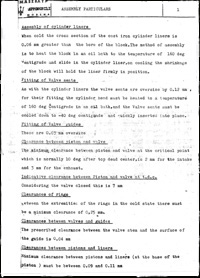 Sample page, in English.
Sample page, in English.
|
There are four pages listing the top speed for any given number of ring and pinion combinations, no doubt useful when dealing with a variety of racetracks. Again it is what is not said that is important. "If you are attempting to change gear ratios during a weekend event (is there any other kind?), donít call the number listed. If you order a different ring or pinion, you may have your parts in time for next yearís event."
All this, of course, typed by hand on a rather rough sheet of paper and copied. Oh, there are holes for a binder, but weíre not sure a binder was part of the deal.
Let us account for whatís missing. No information on how to turn the key to start the motor, nothing about how to adjust the seats, find the vanity mirrors, read the instruments, operate the safety belt, change a tire, install a baby seat, tune the radio, repair a headlight, or even turn on the interior light. No list of dealers, nearby or otherwise. And not one word about how to take care of the bodywork or what wax to use. Well, it's good thing they included their telephone number.
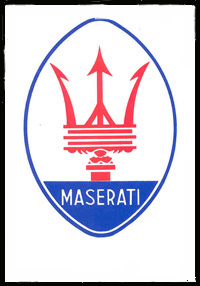
|

|